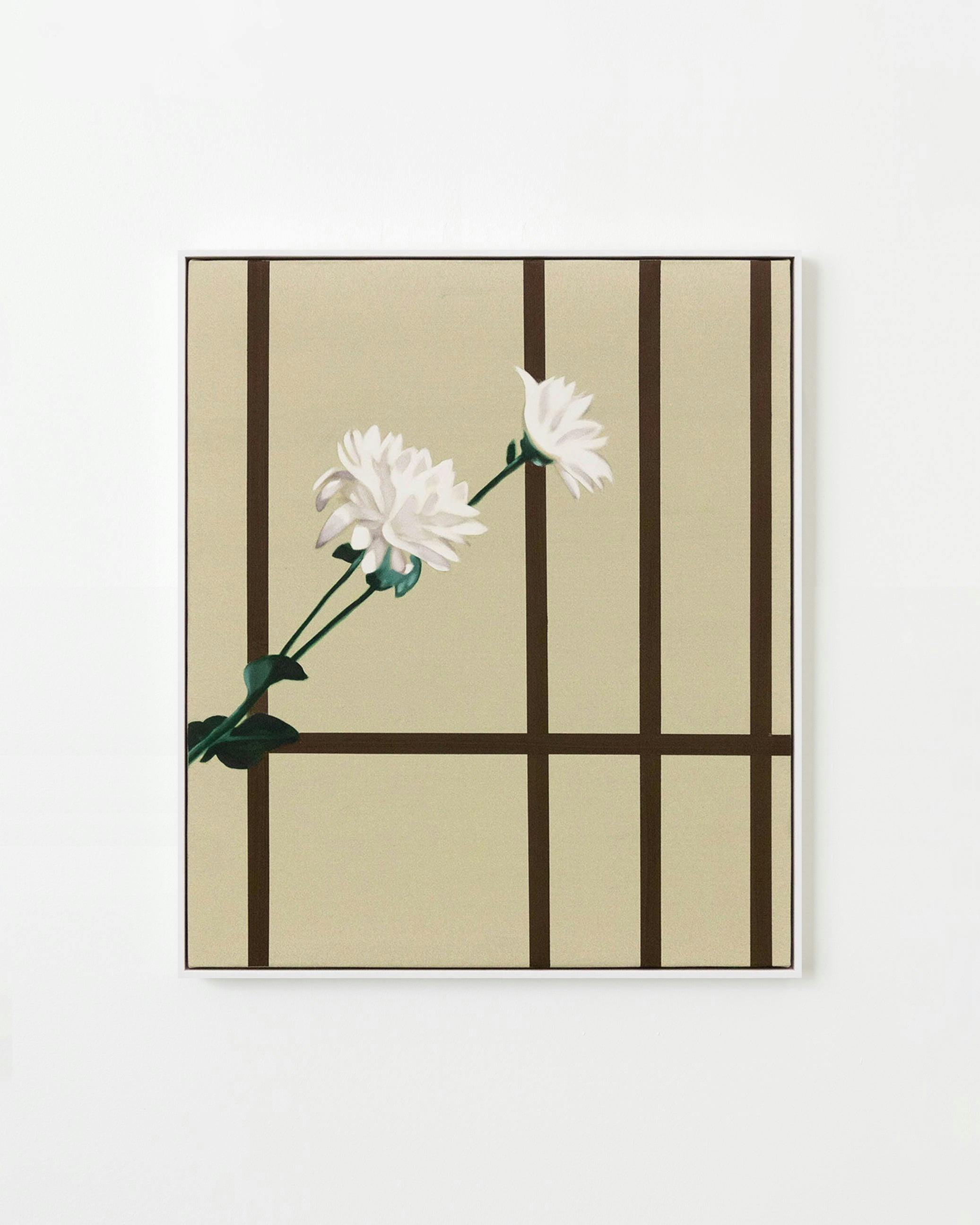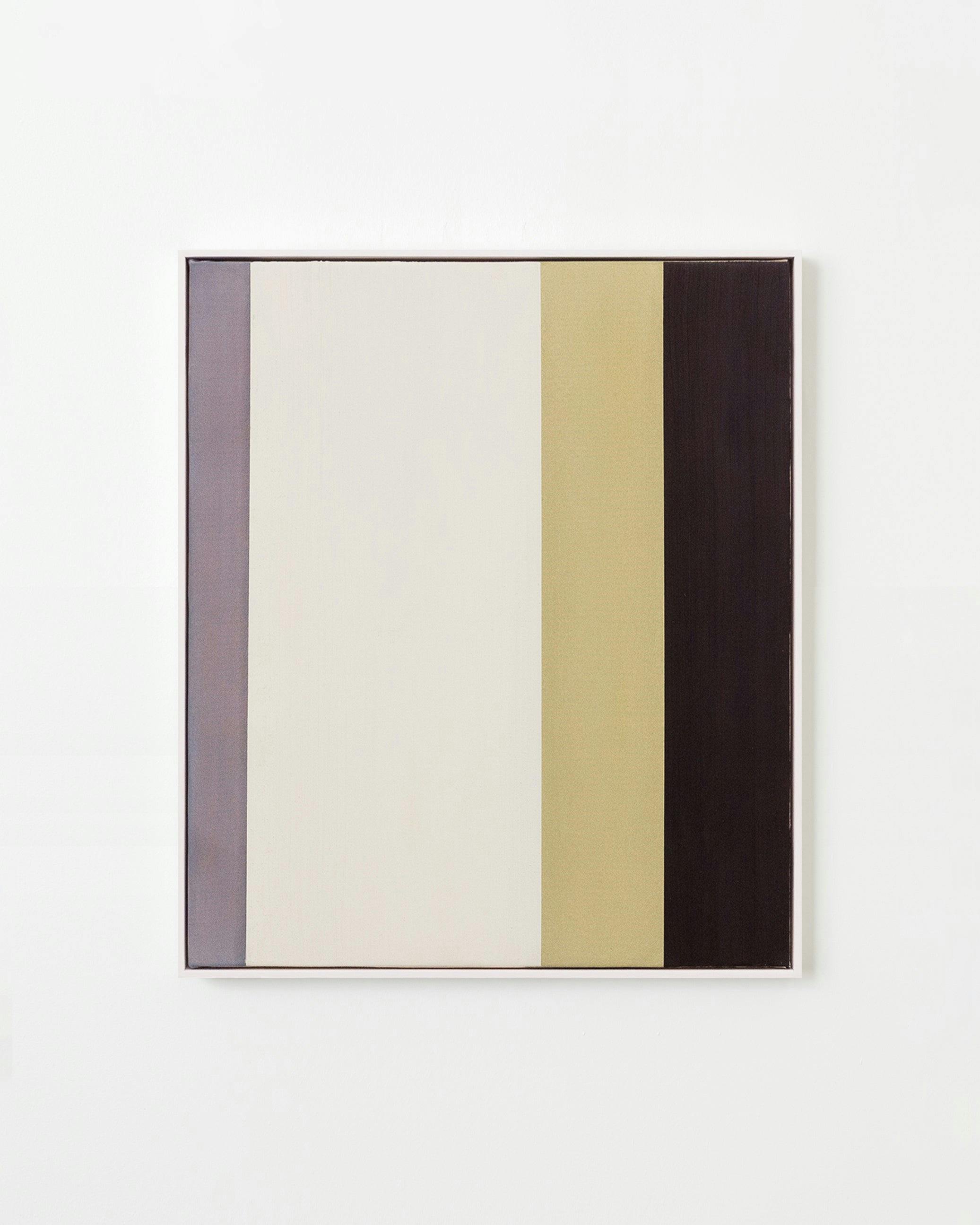Bryce Anderson
Where are you from and where do you reside?
I'm from a beachside town north of Brisbane, Australia; I live and work in Melbourne, Australia.
What’s your favorite part of living in Melbourne?
The art community. There are so many incredible artists and galleries.
Describe a typical day in the studio for you.
I get into the studio around 10. Depending on what I’m working on I could be stretching and preparing canvases, making collages, or starting a painting. I like to alternate between different tasks to keep things interesting. The window between 1–6 pm is when I achieve the most - no interruptions for a few hours is ideal.
What is the most difficult part of the artistic process for you?
Finding the right images.
How do you incorporate chance in your creative process?
Chance has played a significant role at different stages of my practice. For example, using gravity to determine the composition of a work by dropping cut-outs onto paper and fixing them where they land, or rolling a die to determine the sequence in which a series of works are installed. I go through periods where I employ these methods, followed by periods of more direct control as I grapple with my new discovery. Chance is a way to break knots of knowables.
Chance provides a means to look outside ourselves, to escape our biases embedded in our personality by culture and history.
Bryce Anderson
Can you speak more to ‘knots of knowables’?
I think it's a phrase from George Brecht’s Chance-Imagery, which is a small pamphlet that explores the use of chance within modern art, from Dada and Surrealism to Jackson Pollock and philosophy. To break knots of knowables is to give up intention or structure within a process. Chance provides a means to look outside ourselves, to escape our biases embedded in our personality by culture and history.
Are you formally trained?
Yes, I hold a first class honours from the Victorian College of the Arts and completed my undergrad in a small town in northern New South Wales. I had already been painting for a few years before I commenced art school; both universities were positioned around ideas rather than technical training. I have a few mid-career artists I turn to for advice, one of which was my supervisor for my honours year. His name is Chris Bond, he has an incredible mind and technical ability when it comes to painting.
What are some themes you find recurring in your pieces, intentional or not?
A recurring theme within my practice is the motif of the still life, as well as collage. These themes reflect my interests in objects—a printed image may depict an object, but it is also an object within itself with recto and verso. The same can be said for a painting; I think about a canvas's edge or frame as much as the painting itself. This duality is something I try to accentuate by employing different modes of image-making to sit directly beside or on top of one another. Some areas suggest depth while others are flat and abstract, some are photographic and some are painterly. From an art-historical point of view, a painting of a vase of flowers can say so much that it has come to encompass many narratives and symbolic definitions. To me, it demonstrates the power of pictures. The fact that I am able to build my practice around this concept shows that the still life has more to offer us yet.
Another recurring theme within my work is authorship. I address this through the appropriation of historical artworks and popular culture. A painting is imbued with the hand of its creator, even though it may not reflect the artist personally and still retains a separate history. In the same way, a discarded image can be resituated without breaking away from its history entirely. Even the tear suggests its past.
How do the different elements come together in your works?
It really depends on the process. What I set out to achieve may not necessarily be where I end up. I like to chase leads and see where the work takes me. I have a few different ways of working and I shift through these processes depending on the subject or how I am feeling in the studio that month.
You have a particularly unique process for creating your artwork. What led you to this process and how did you know it was the right one to pursue?
I realised at some point that I’m more concerned with constructing images than paintings. The processes I use become tools for ideas, and depending on the idea I am prompted to use a particular process. This also comes from a desire to keep things interesting and to avoid stagnation. I'm interested in so many forms of art that I can't help but try to bring some of those parts into my world.
I realised at some point that I’m more concerned with constructing images than paintings.
Bryce Anderson
Can you speak more to your process for creating a painting? [collage, resources, ideation, etc]
I source my references in various ways. Some are derived from books and magazines found in second hand stores, while others are found online in image databases or online auction houses. The printed matter become paper collages and the digital sources become digital collages. If I am working towards a show, I work to some sort of premise. It may be one work that offers potential to be expanded upon for its conceptual or aesthetic concerns. Some series start as hunches and they gradually evolve over time, while others are premeditated and more conceptually driven. Some references suggest the process best suited for execution, while other references are designed with a particular process in mind.
Where do you find your day-to-day inspiration?
Music drives my time in the studio. It varies largely in genre, but is always playing.
Do you find that your location strongly influences the direction of your work?
A lot of my images are derived from Australian content, but I don't think they reference any place directly and exist as a universal image. I think over time, if I were working in a different country, it would have to influence my work in some way.
Is there any artwork on display in your home/studio? Whose is it?
Yes, I have work displayed at home, a drawing by Julia Trybala, a print and painting by Adam Turnbull, a painting by Tully Moore and a recently acquired screenprint by American artist Augustus Thompson








